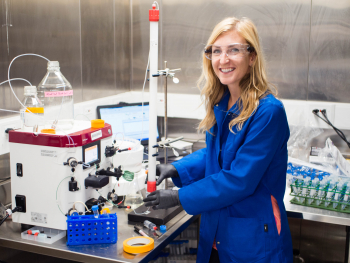
School:
Grade Level:
Teaching Position:
Supervisor:
Department:
Mentor:
Research Project Year:
Research Project Title:
Research Project Description:
Protein based biosensors could be an advancement to currently available biosensors and a possible improvement for artificial implant success. The Plaxco research group is studying the change in protein stability (denaturation) as a response to surface proximity, which can adversely affect the success of biosensors and artificial implants. The focus of this study is to show how proteins respond to these various artificial surfaces by developing a method to quantify the rate of protein unfolding (denaturation) on a surface. Currently, there is a method to measure the protein denaturation in solution, which can be used as a baseline for comparison. In order to measure protein denaturation on a surface, proteins are designed, expressed, and purified, using multiple, sequential chromatography techniques. Successfully purified proteins can be labeled with methylene blue, and the conductivity of the native and unfolded states of the proteins can be related to the percent of sample denatured. The ability to accurately measure the protein’s response to the surface will provide a basis for the development of successful protein based biosensors that can be used to detect antibodies or pathogens in vivo.
